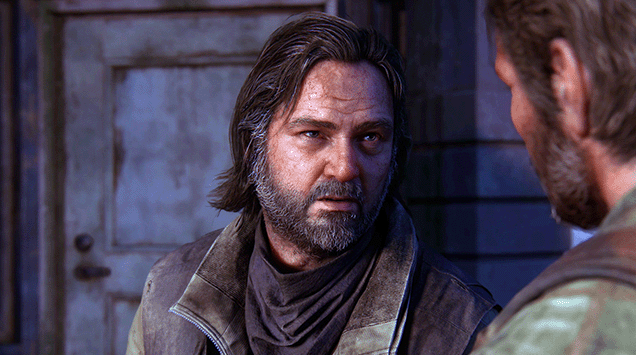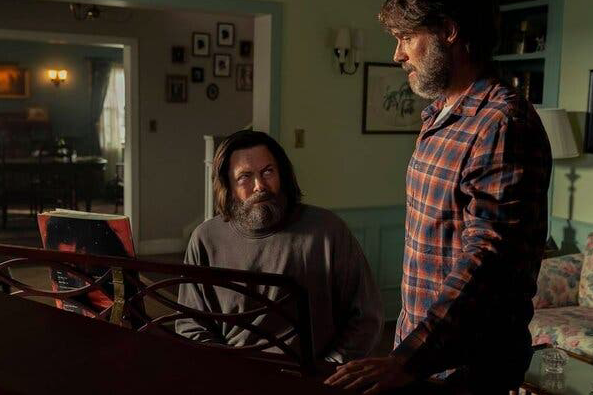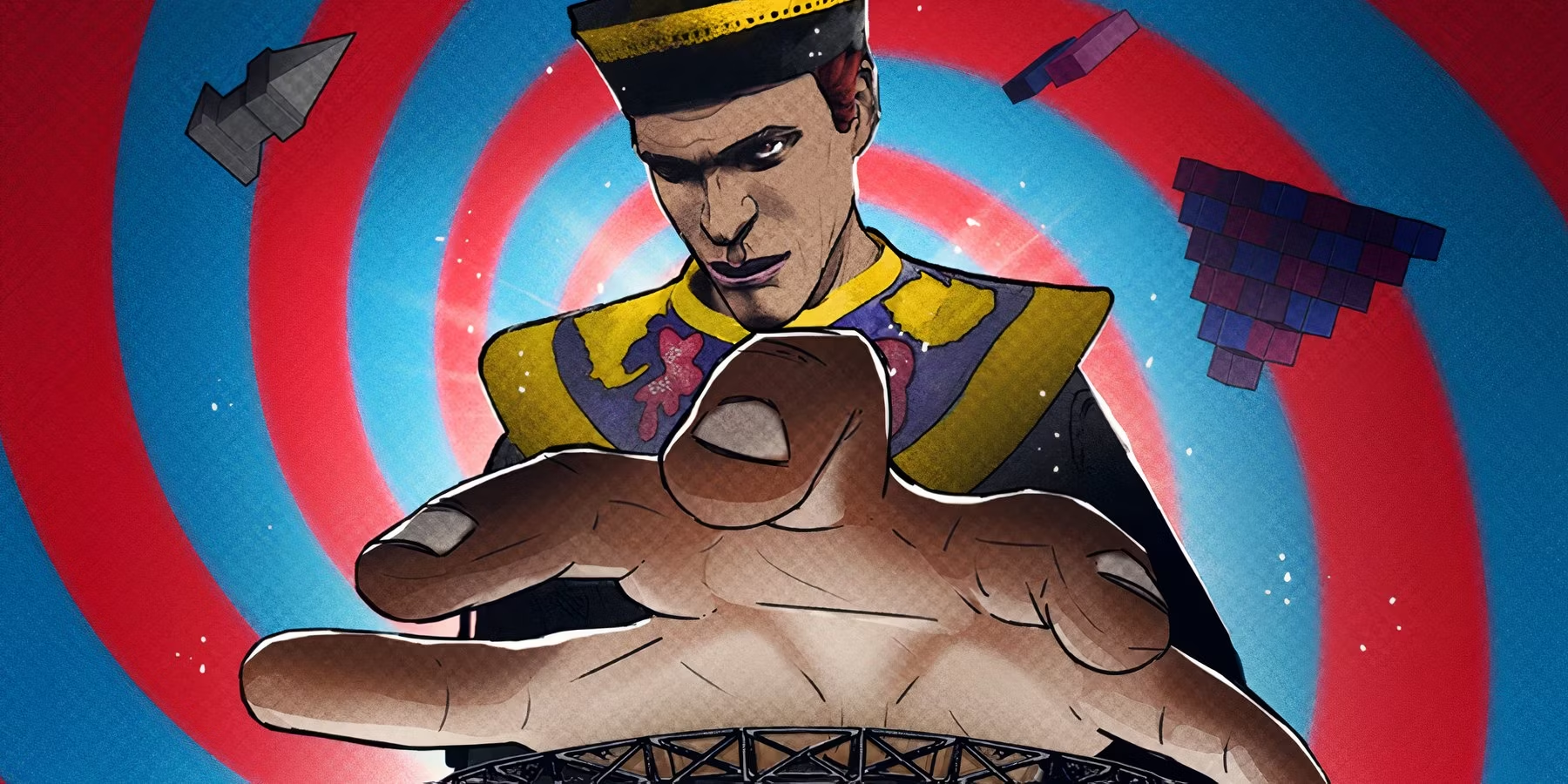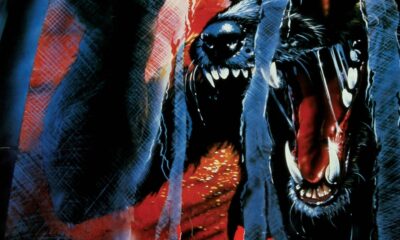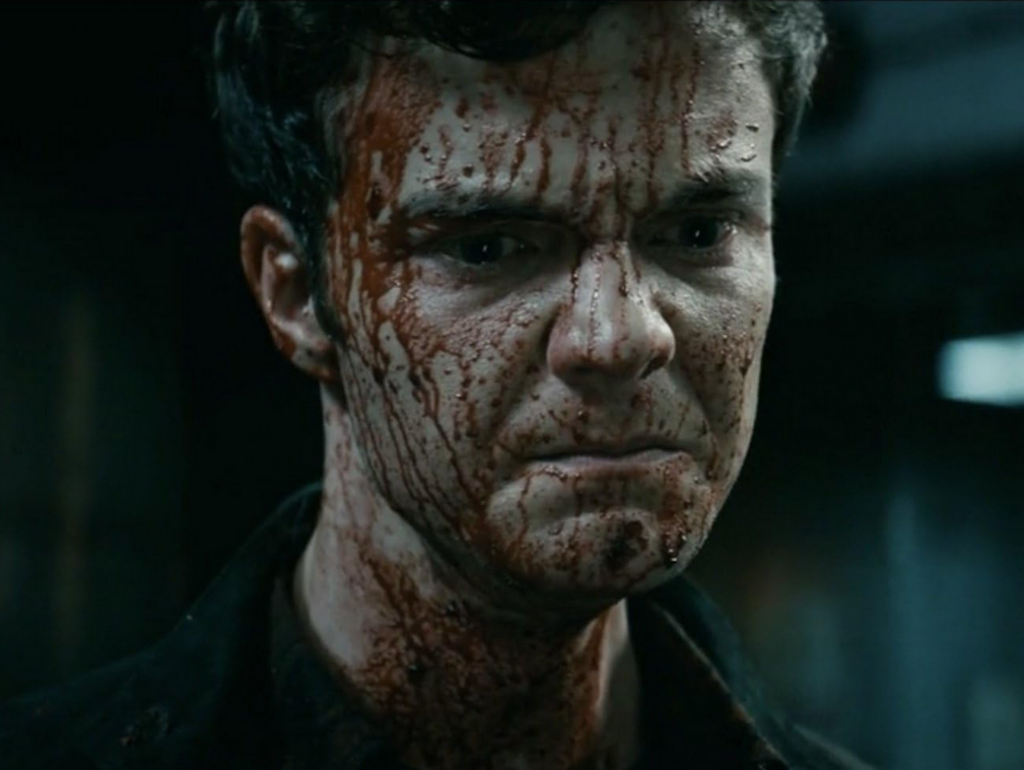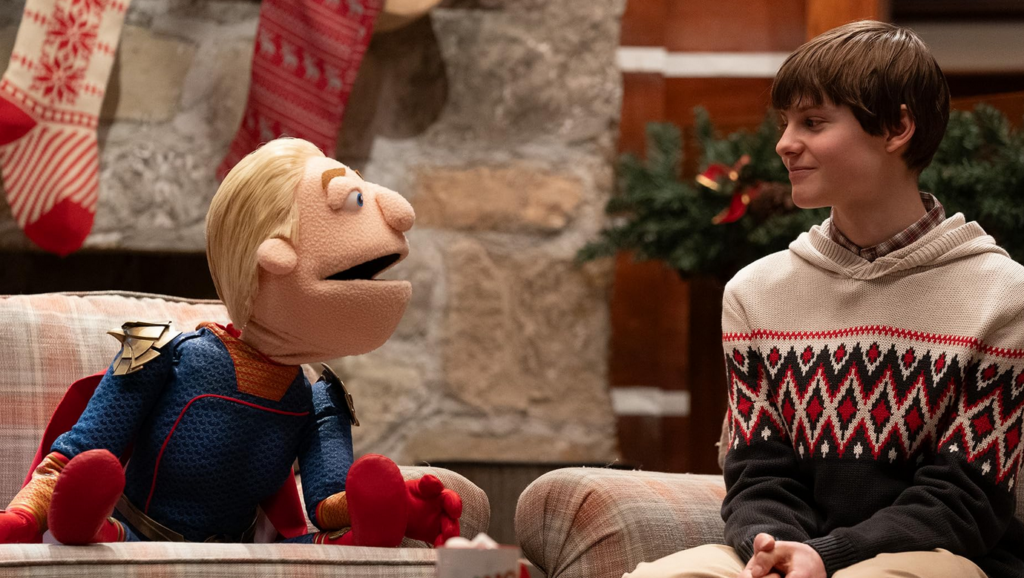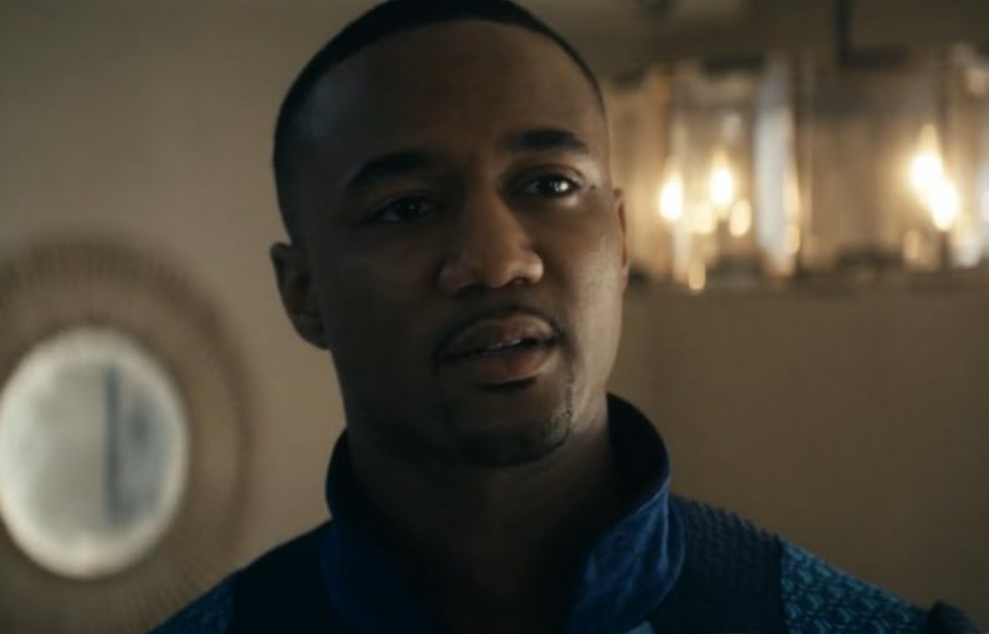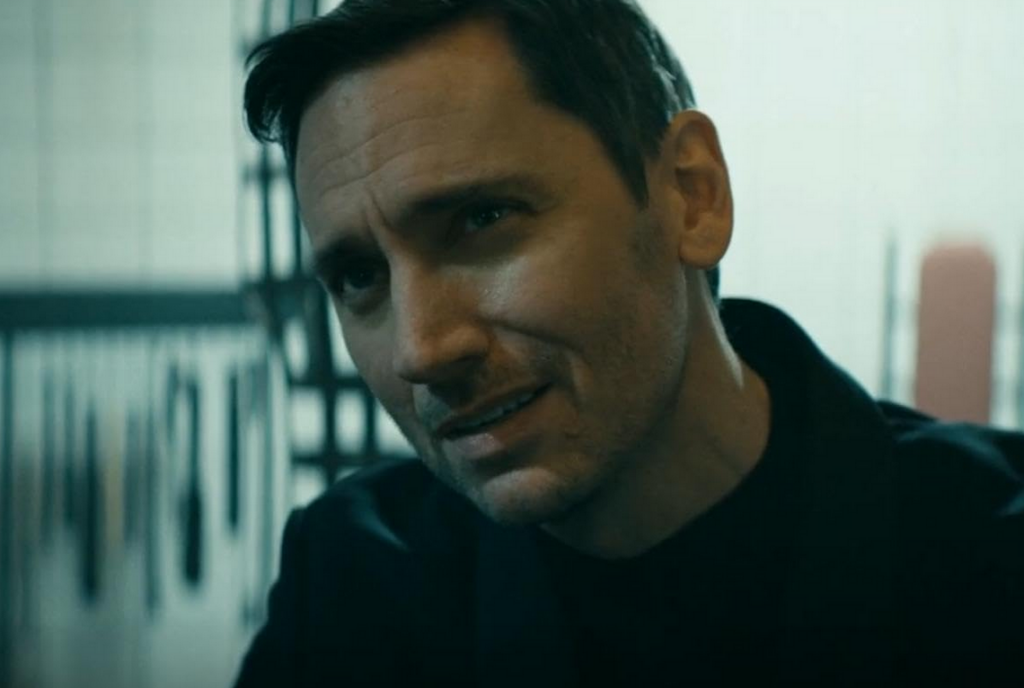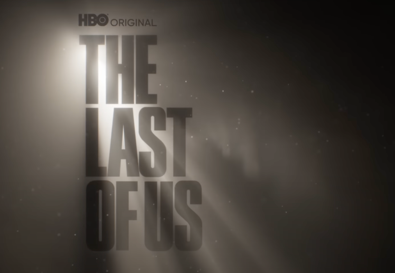
The Last of Us: Episode 3: Long, Long Time
More Videos
Published
1 year agoon
By
Court Court
One of the first mentions of Bill and Frank in HBO’s The Last of Us is in episode one, when Ellie discovers that Joel and Tess communicate with men over the radio via 60’s-80’s pop songs. Rewind to the end of the episode, when Depeche Mode’s 80’s hit “Never Let Me Down Again” plays. Bill and Frank are in some sort of trouble. In the third episode of this series, “Long, Long Time,” we find out what that trouble was.
*WARNING: THIS POST CONTAINS HEAVY SPOILERS*
The Dead Can’t Get Infected
Let me preface by saying that however you think this episode is going to be, you’re most likely very, very wrong.
“Long, Long Time,” begins shortly after Joel and Ellie are forced to leave Tess and escape the Boston capitol building. They are in the forest, prepping for another long journey ahead of them. As they walk, we learn more backstory on the origin of the Cordyceps pandemic. “Who was the first to bite? Was it monkeys? I bet it was monkeys,” Ellie says. But Joel explains no, it wasn’t monkeys. Rather, the disease spread through basic food products, like flour or sugar. Then the cordyceps mutated as flour, sugar, biscuit and pancake batter hit the store shelves that Thursday before the outbreak, infecting everyone who purchased those products. “That makes more sense,” Ellie somberly admits.
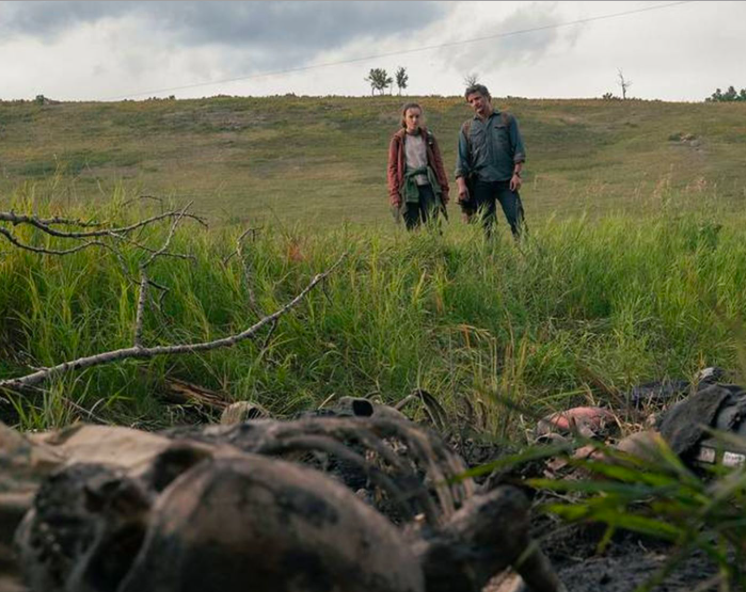
Eventually, they find a picked-over abandoned grocery store, where Joel hides his assault rifle and green toolbox underneath the floorboards. While Joel is looking around the store for supplies, Ellie heads to a room in the back and finds a hidden basement. Unbeknownst to Joel, she crawls inside and comes face to face with an infected. Luckily, Ellie has the advantage; the infected is crushed by a pile of rocks and has no chance of escaping. Ellie walks over to it, cuts her knife across its face, then stabs it to death. Her first kill.
Once the two are done with the store, they continue on their journey to Bill and Frank’s, whom we finally get to meet.
Meet Bill
It’s September 30, 2003, four days after the outbreak. Bill (Nick Offerman), a burly survivalist, is hiding in his bunker, watching the cameras planted outside his house. FEDRA is taking survivors to a Quarantine Zone (QZ). Once Bill confirms he is alone, he makes the town his own.
Four years of isolation pass and we witness all the work Bill has put in to protect his home from infected and raiders alike. He is a hardened man who is afraid of nothing. He has safe-proofed his home with trip wires, high voltage electric fences and trap holes. When an uninfected man on his way to Boston suddenly falls into one of the holes, Bill’s entire world changes. The man is named Frank (Murray Bartlett), and he and Bill quickly become infatuated with one another. Before we know it, another three years have passed and Frank is still living with Bill. Their contrasting personalities compliment each other as they protect the neighborhood together. And Frank’s desire to meet knew people overcomes Bill’s tenacity for seclusion. Thus, the origin of their partnership with Joel and Tess.
PlayStation vs. HBO
“Long, Long Ride” is brutal in the most unexpected ways. In the playstation game, we meet Bill after he saves Joel and Ellie from a swarm of infected after Joel gets caught in one of Bill’s traps. He takes them back to a hideout, where Joel picks up ammo, can update his weapons at a workbench, and receives a shotgun and nail bomb recipe. Meanwhile, Bill and Ellie, being the stubborn characters that they are, are at odds with each other throughout their entire journey together.
It is in this saga with Bill that we come across a Bloater, the most aggressive infected character in the first Last of Us game. Finally, the trio make it to Bill’s home, where they find Frank’s lifeless body hanging from a ceiling. He became infected and chose to end his life before turning into an unrecognizable monster.
None of this happens in “Long, Long Time.” While the game hints at Bill being gay through Frank’s suicide note and a male porn magazine that Ellie stole from Bill’s hideout, there is not any other mention of it. He refers to Frank as his “partner” and nothing else. While it is clear that Frank and Bill were in a relationship, it was not a very loving one judging by the hatefulness toward Bill in Frank’s suicide note.
However, in the HBO show, Bill and Frank’s relationship is healthy and loving, including their fights. “Long, Long Time” presents a refreshing depiction of healthy masculinity and sexuality that stays authentic to the characters and their stories.
Another difference from the game is that the only interaction between Bill and Joel in episode three is when they meet for the first time, almost ten years after the outbreak, at a small dinner party at Bill and Frank’s house. While it would have been fun to see more interaction between Bill and Joel in the show, their lack of shared screen-time doesn’t downplay the importance they have in each other’s lives. This is pertinent to a decision Joel makes about whether to keep traveling with Ellie, and it happens in the end of the episode, when Bill and Frank are both dead.
“I hope he never lets me down again.”
Bill is a character who means business and doesn’t care much for the people with whom he shares this world. Nick Offerman took this characterization and ran with it, transforming into the most believable performance of Bill any Last of Us fan could ask for. He is a delightful live-action version of this bitter, coldhearted character.
And yet, there is so much to Bill we don’t know about that HBO was determined to show us. Yes, Bill is an angry reclusive survivalist who was “happy when the world ended.” He is not afraid to shoot down trespassers, infected or not, and exhibits a “Don’t Tread On Me” flag in his bunker that is filled floor to ceiling with an array of guns and other weaponry. But after he meets Frank, it turns out that Bill is also sensitive, sweet and filled with unwavering protective love.
Offerman and Bartlett’s chemistry with one another is beautiful. Bartlett brings Frank to life as more than just a man who hated Bill. He has a rich, cultured personality, is full of love and hope. Perhaps the most heartwarming part of the episode is when Frank surprises Bill with a garden of strawberries in their backyard. After a decade of rations and frozen meals, one can only imagine the bliss of eating freshly picked fruit for the first time since the world’s end. With the sun’s rays beaming through the trees and small bugs floating around them, Offerman and Bartlett performed this scene with such sincerity and love that it felt like we, the audience, were right there with them.
“Long, Long Time” ends with Joel and Ellie finally making it to Bill and Frank’s home. Here, all the flowers are dead, an unfinished dinner is caked with mold and a note to Joel is left on the kitchen table. Bill left all his belongings to Joel, including his beloved truck.
The Verdict
“Long, Long Time” is devastating. Offerman and Bartlett’s performances, coupled with the heartbreaking score and thoughtful film editing, create an unexpected love story in a gruesome, ruthless world. All the while, the world-building continues, the story progresses and Joel and Ellie’s bond slowly grows stronger. While there are moments of dialogue identical to the game, this episode is ultimately original. In other words: it is tv filmmaking at its finest. It asks audiences to trust the writers with any creative liberties they’ll take with the show. I would say this request for trust is justified.

It is in this part in the game where Joel and Ellie meet Sam and Henry. Will we meet them in the next episode? We won’t find out until next week. So until then, make sure you check out the other shows and games we’re consuming at HauntedMTL.
CourtCourt is a writer, horror enthusiast, and may or may not be your favorite human-eating houseplant.

You may like
We have come now to the finale of season four of The Boys. And while it didn’t have the literal blood fireworks I wanted, someone did get ripped in half in the air. So, that’s pretty close.
As a note, I will try to avoid spoilers as much as possible. This ending was a hell of a gut punch that should be experienced as blindly as possible. That being said, I will not be able to avoid spoilers and still give a full legitimate review. Proceed at your own risk.
The story
The main storyline for this episode is the attempted assassination of President-Elect Robert Singer. The Boys join forces with the Secret Service to protect him. But, as we learned last episode, Annie has been replaced with a shapeshifter. A shapeshifter that was welcome not just into Hughie’s anus, but into the protective bunker in which the President-Elect is hiding.
What worked
The first thing I want to discuss about this episode is the ending. But we need to do this carefully.
The important thing here is that the ending breaks your heart on so many levels. So many terrible things are happening to characters that it’s almost hard to keep track. And each moment is significant to each character.
I cannot give a specific example. But no matter who your favorite character is, you’re going to weep for them.
Unless your favorite character is Sage. And this is the next thing that made this episode so fantastic.
I don’t think I’m spoiling anything to say that Sage’s plans worked out exactly as she wanted them to. And she got exactly what she wanted.
What she wanted wasn’t power. It wasn’t money or fame or vengeance. It wasn’t to win the love of anyone. She just wanted to see if she could do it.
That is a terrific, terrifying motivation! Because all she wants is to play a massive game of chess with people as pieces. She doesn’t care about anyone. She just wants to see how many people she can manipulate. She just wants to set things on fire to see if she can.
Fantastic. A plus villain work.
The next thing I want to discuss is a cornerstone of the whole series.
The morality of The Boys shifts through the series. While it’s very much a battle to save the world from overpowered super monsters, it’s also a battle for the souls of our real heroes. And in that battle, there are two warring factors. We have Hughie, always trying to bring everyone up to a better level. And we have Butcher, who has no problem at all hitting rock bottom with a shovel in hand to do some more digging.
In this episode, we saw almost every member of The Boys challenged. Will they rise to their higher angels, or sink with their demons?
On a similar note, I am so glad that the writers kind of addressed my issues with Annie. They did this by having the shapeshifter get right into her face and accuse her of thinking that she’s better than everyone.
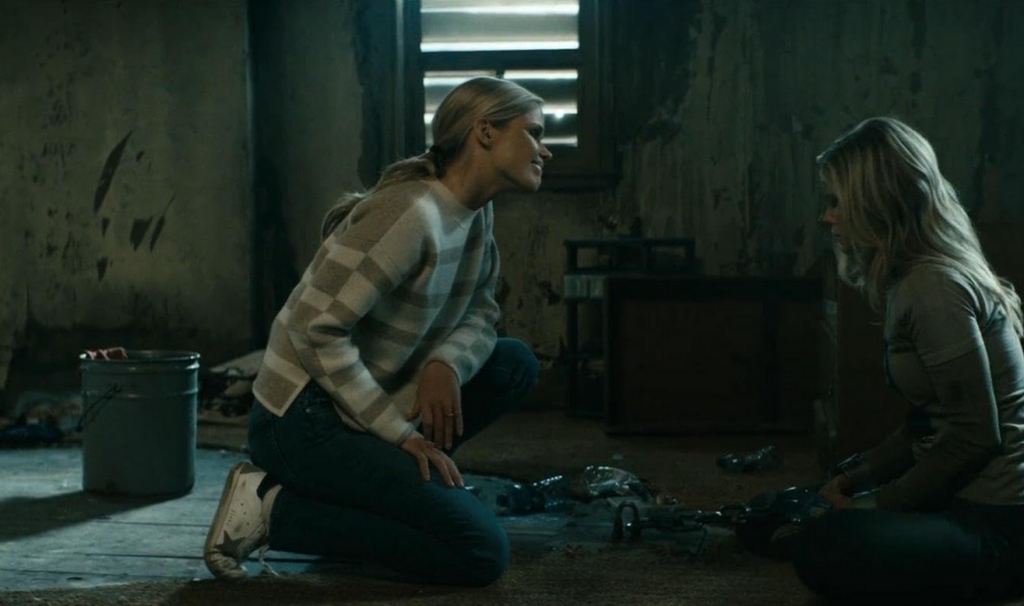
While that was devastating for the character, it was a little cathartic for those of us who felt like Annie was a little too good of a good guy.
What didn’t work
This is a small matter, but it is an issue that I want to address. After Annie finds out that Hughie slept with her doppelganger, she is furious at him.
In addition to this being unfair, it’s also a very cliche element to add. In almost every instance of a lookalike in fiction, there’s a moment where the love interest of the victim is fooled. Or almost fooled. And it’s always the same fight. It’s just played out and predictable. I’m just glad that it didn’t last very long.
Now that we’ve come to the end of the season, I can officially say that it was amazing. The story was deep and rich. The special effects were a stomach-turning good time. The character development was spot-on and satisfying. And, of course, it left me just about gagging to see what happens next. Unfortunately, it looks like we’ll have a bit of a wait. Because as of right now, the fifth season isn’t expected until 2026.

We’ve reached the second to last episode of The Boys, season four. And, as is appropriate for the penultimate episode of any show, things have to get a lot worse before they can get better.
Let’s discuss.
The story
Christmas is coming, and the whole world is getting ready. Ryan, despite being very clear that he didn’t want to appear on any TV shows or movies, has been strong-armed into participating in a Vought puppet Christmas special. He draws the line, though, when asked to sing about turning one’s parents in if they start talking about woke things.
Meanwhile, The Boys are trying to keep each other together. Butcher decides to take Sameer to the rest of the team. He also gets Frenchie out of prison, hoping they can make the Sup virus necessary to finally take down Homelander. Instead, this decision means disaster for one member of the team.
What worked
I first want to talk about Ryan’s speech near the end of the episode. Because it was exactly the moral of this whole story.
Ryan’s dad is a monster. His stepdad is also kind of a monster. But Ryan is a good kid. He cares about people, about family. And while he loves Homelander and Butcher, he doesn’t want to be like them.
Even better, this speech sounded like something a kid would say. Ryan didn’t open his mouth and start sounding like a college student all of a sudden. He sounds like a kid who misses his mom and wants to live up to the good standards she set for him. And I think that’s terrific.
Speaking of Homelander, he shot himself in the foot in this episode. I said earlier in the season that his hubris was going to be his downfall, and I was right. Without Sage, he just has the same weaknesses he’s always had. He’s going to fail because he just isn’t clever enough or patient enough to succeed.
Without Sage, I think a win is in the bag for The Boys. This isn’t to say that Homelander by himself isn’t dangerous. It’s just that he’s more like a wildfire than a controlled burn. He’s going to cause a lot of damage, but not get anything he wants out of it.
More’s the pity for him and everyone else who has to share his world.
Finally, I am thrilled with A-Train’s redemption story. I love that he wants to be a good person not to save himself, but to be a good person. His honest, pure and warm reaction to that little kid smiling at him in the last episode was heartwarming. It changed him in a moment, bringing to light a goodness that he’s been keeping under wraps for a long time.
This, along with Ryan’s courageous speech, proves once again what The Boys does so well. Yes, it’s gruesome. Yes, there’s blood and balls and batshit events. Yes, someone occasionally gets ripped in half. But there is a true human goodness in the story. One that we catch glimpses of. There are good people among the monsters. There is hope for redemption.
What didn’t work
Of course, so few things in this life are perfect, and this episode was no exception. For instance, I was irritated by the insinuation that Butcher cheated on his wife.
That just doesn’t make any sense. We’ve seen flashbacks of Billy and Becca. They were happy. He was happy. He was head over heels for her. And I don’t think it’s realistic or necessary for the character to throw in that he cheated. It does nothing to add to the story, it’s just a weird and offputting moment.
Doesn’t Butcher have enough to hate about himself? Can’t we just give him that at least he was a good husband?
Finally, I kind of hate that we ended up with Annie being caught. It’s just cliche, which is something I don’t normally say about this show. It feels lazy unless they do something very clever with it in the last episode. Which, I suppose, they might.
Next up is the season finale. And with this season being as insane as it has been, I’m expecting nothing short of bloody fireworks. And I mean literal fireworks of blood. At this point, would it surprise anyone?
 (4 / 5)
(4 / 5)
Episode six of The Boys was one of the most surprising episodes of the series so far. And that is certainly saying something. Because this season has so far been bonkers.
The story
Our episode today revolves around a party at Tek Knight’s lovely mansion. Yes, it does look just like Wayne Manor.
The Boys know that Tek Knight is working with Homelander on something, but they don’t know the details. So they decide to send Hughie in to bug the mansion.
Because that’s worked so well the other two times he’s tried to hide a bug!
It should surprise no one that this time goes no better. Hughie finds himself in Tek Knight’s basement. And by that I mean his BDSM dungeon.
Meanwhile, the party upstairs is no less disturbing. Homelander and Sage are trying to convince some well-off political donors to support a cue after the election. When pressed for details on his plan, Homelander freezes. He looks to Sage for help, but she wasn’t recently shot in the head and still in the junk food stage of her healing.
Fortunately, or unfortunately depending on your point of view, Neuman jumps in and saves the day.
What works
If I’m going to say one thing about this episode, it didn’t hold back at all. I didn’t expect them to show a character masturbating, sitting their bare behind on a cake, or spraying breastmilk into someone’s face. But every time I thought they’d cut the scene and let something be left to our imagination, they did not do that.
This is a dangerous move. Whenever you show the monster, you run the risk of them not being scary enough, or gross enough. As Stephen King says in Danse Macabre, to leave this sort of thing to the imagination if the reader makes things so much worse. So when they finally experience the monster, they might say that this isn’t so bad. It could have been so much worse.
But in this case, they managed to avoid that by making the scenes, especially the ones in Tek Knight’s dungeon, so much worse than I imagined it would be.
What doesn’t work
While this was a deeply disturbing episode in many ways, there was one really innocent and sweet moment.
And yes, I did have a problem with it.
Confronted by Firecracker, Annie decides to apologize for spreading rumors about her when they were kids. She tells her that she is genuinely sorry.
And I believe her. I don’t think Firecracker did, but I did.
So why is this an issue? Because I’m starting to think that Annie is maybe too nice. She is too good.
I know that Annie is our good guy. But every one of the other good guys has flaws. Hughie let his pride get in the way and took Temp V. MM hid himself from his daughter instead of teaching her to work through her emotions. Kimiko is far too closed off and has a hard time trusting others. Frenchie numbs himself with drugs. And well, what hasn’t Butcher done?
It is unrealistic that Annie is just so kind and so flawless. We all have shadows in our personalities. We all have weaknesses, we all mess up. We all do things we wish we could take back. The fact that Annie doesn’t seem to have anything like that is not just unrealistic. It’s infantilizing.
Give her some deep dark secrets. Give her something real to regret.
This was a shocking episode, even for someone fairly jaded like me. I wasn’t expecting the sort of weird sexual depravity, though I guess maybe I should have seen it coming. It was dark, upsetting, tense, and funny as hell. And with just two episodes left in the season, I can imagine the stakes are only going to get higher.
 (4 / 5)
(4 / 5)
By the way, if you like my writing you can get my short story, Man In The Woods, on Smashwords and Amazon.


